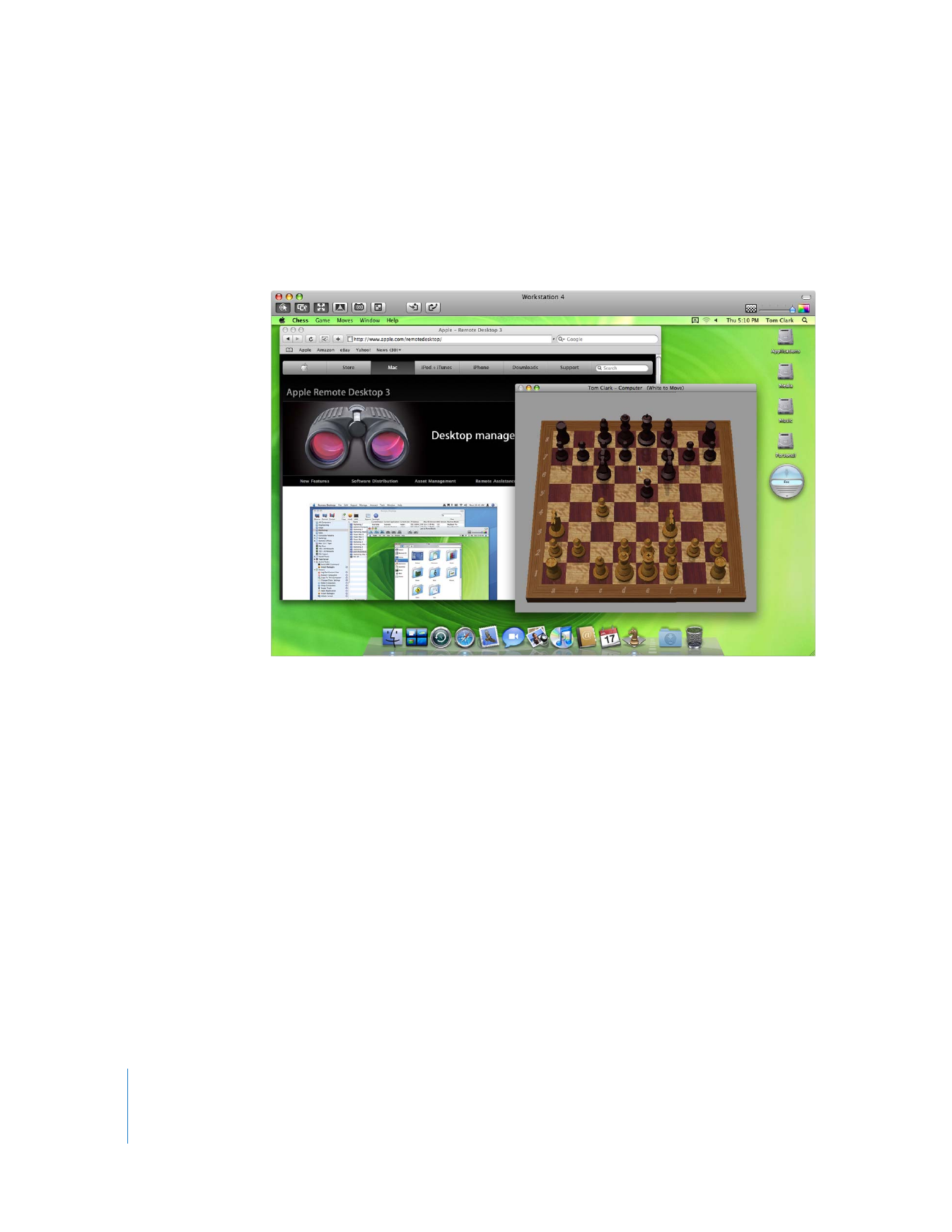
Controlling Apple Remote Desktop Clients
Apple Remote Desktop client computers can be controlled by any administrator
computer that has the Control permission set. See “Apple Remote Desktop
Administrator Access” on page 65 for more information about Apple Remote Desktop
permissions.
While you control an Apple Remote Desktop client computer, some keyboard shortcut
commands are not sent to the remote computer, but they affect the administrator
computer. These include:
 Change Active Application (Command-Tab and Command-Shift-Tab)
 Show or Hide Dock (Command-Option-D)
 Log Out User (Command-Shift-Q)
 Take Screen Shot (Command-Shift-3, -4)
 Force Quit (Command-Option-Escape)
Also, special keys including the sound volume, screen brightness, and Media Eject keys
do not affect the client computer.

Chapter 7
Interacting with Users
87
These instructions assume that the observed computer has Apple Remote Desktop
installed and configured properly (see “Setting Up an Apple Remote Desktop Client
Computer for the First Time” on page 43) and that the computer has been added to an
Apple Remote Desktop computer list (see “Finding and Adding Clients to Apple
Remote Desktop Computer Lists” on page 53).
To control an Apple Remote Desktop client:
1
Select a computer list in the Remote Desktop window.
2
Select one computer from the list.
3
Choose Interact > Control.
4
To customize the control window and session, see “Control Window Options” on
page 87.
5
Use your mouse and keyboard to perform actions on the controlled computer.
If your Remote Desktop preferences are set to share keyboard and mouse control, the
remote computer’s keyboard and mouse are active and affect the computer just as the
administrator computer’s keyboard and mouse do.
If your preferences aren’t set to share control, the remote computer’s keyboard and
mouse do not function while the administrator computer is in control.